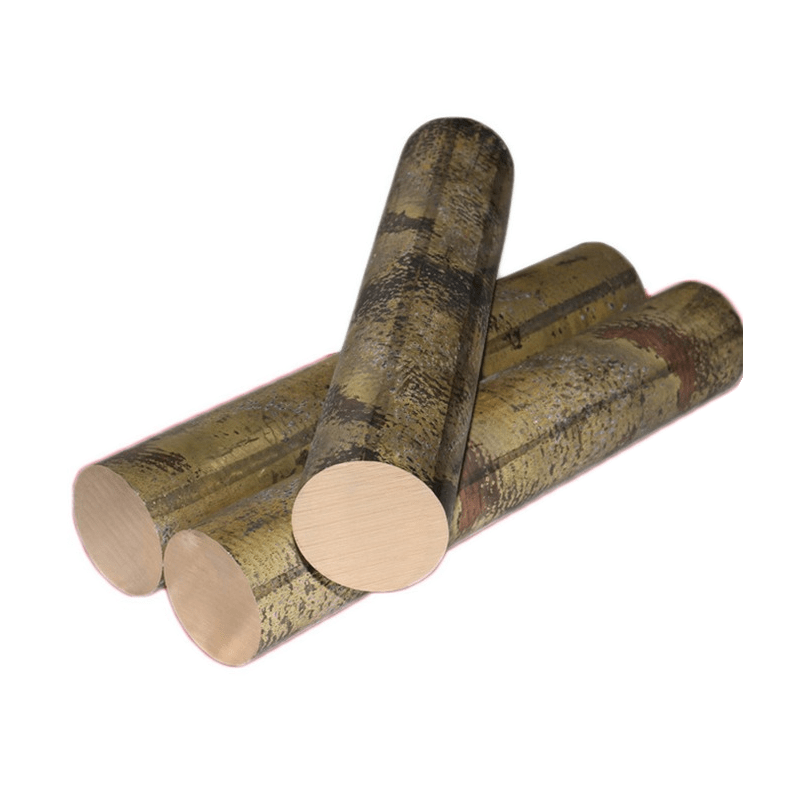
Here’s a detailed comparison between UNS C62300 and UNS C62400 copper alloys, structured into sections and tables for ease of understanding. This comparative analysis includes essential properties, performance metrics, industry applications, processing methods, and more.
Comparison of UNS C62300 and UNS C62400 Copper Alloys
บทนำ
UNS C62300 and UNS C62400 are both aluminium bronze alloys known for their excellent mechanical and corrosion-resistant properties. They find applications in various industries, particularly in marine, pump, and valve components. Despite their similarities, they exhibit distinct differences in composition, performance, and applications, which are essential for engineers and material scientists to understand.
องค์ประกอบทางเคมี
The chemical composition of these alloys significantly influences their mechanical properties and performance characteristics. Below is the comparison of their elemental contents:
| ธาตุ | C62300 (% Content) | C62400 (% Content) |
|---|---|---|
| ทองแดง | 82.2 – 89.5 | 82.8 – 88.0 |
| อะลูมิเนียม (อัล) | 8.5 – 11.0 | 10.0 – 11.5 |
| เหล็ก (เฟ) | 2.0 – 4.0 | 2.0 – 4.5 |
| แมงกานีส (Mn) | ≤ 0.6 | ≤ 0.3 |
| ซิลิคอน (ศรี) | ≤ 0.25 | ≤ 0.25 |
| ดีบุก (Sn) | ≤ 0.5 | ≤ 0.2 |
| อื่น | ≤ 0.5 | ≤ 0.5 |
คุณสมบัติทางกล
The mechanical properties, including strength, hardness, and ductility, determine the suitability of these alloys for specific applications. Here’s a detailed look at their properties:
| คุณสมบัติ | C62300 | C62400 |
|---|---|---|
| ความแข็ง (Rockwell B) | 89 | 92 |
| ความต้านแรงดึง | 605 MPa | 655 เมกะปาสคาล |
| ความแข็งแรงของผลผลิต | 305 MPa | 330 MPa |
| การยืดตัวที่จุดตัด | 15% | 14% |
| โมดูลัสยืดหยุ่น | 117 เกรดเฉลี่ย | 117 เกรดเฉลี่ย |
| อัตราส่วนของปัวซอง | 0.34 | 0.34 |
| ชาร์ปี อิมแพ็ค | 25.0 – 40.0 J | 15.0 จ |
| Izod Impact | 43.0 – 47.0 J | 23.0 J |
| ความแข็งแรงเมื่อยล้า | 200 MPa | 235 MPa |
| ความสามารถในการแปรรูป | 50 | 50 |
| Shear Modulus | 44 GPa | 44 GPa |
ประสิทธิภาพที่อุณหภูมิต่างกัน
Performance at elevated and varying temperatures is critical for applications in harsh environments. Below is a comparison of how each alloy performs thermally:
| คุณสมบัติ | C62300 | C62400 |
|---|---|---|
| จุดหลอมเหลว | 1041°C (1905°F) | 1027°C (1880°F) |
| ค่าสัมประสิทธิ์การขยายตัวทางความร้อน | 16.2 µm/m°C (9.00 µin/in°F) | 16.5 µm/m°C (9.17 µin/in°F) |
| การนำความร้อน | 54.4 W/mK (378 BTU in/hr.ft²°F) | 58.6 W/mK (407 BTU in/hr.ft²°F) |
การใช้งานในอุตสาหกรรม
Due to their favorable properties, both alloys are utilized in a range of applications, particularly in challenging environments:
| แอปพลิเคชัน | C62300 | C62400 |
|---|---|---|
| Valve Components | ใช่ | ใช่ |
| Pump Components | จำกัด | ใช่ |
| Marine Equipment | ใช่ | ใช่ |
| High Strength Fasteners | ใช่ | ใช่ |
| ฮาร์ดแวร์สายเสา | ใช่ | ใช่ |
รูปร่างและขนาด
The availability of these alloys in various shapes and sizes makes them versatile for different manufacturing processes:
| คุณลักษณะ | C62300 | C62400 |
|---|---|---|
| รูปร่างที่มีจำหน่าย | แท่ง, บาร์ | แท่ง, บาร์ |
| ขนาดมาตรฐาน | หลากหลาย | หลากหลาย |
| แบบฟอร์มทั่วไป | แผ่น, จาน | แผ่น, จาน |
มาตรฐานการผลิต
Both alloys adhere to various national and international standards for quality assurance:
| มาตรฐาน | C62300 | C62400 |
|---|---|---|
| ASTM | B124, B150 | 150 บ |
| ASME | SB150 | SB150 |
| SAE | เจ461, เจ463 | เจ461, เจ463 |
การเชื่อมและการแปรรูป
The ability to weld and form these alloys is essential for their application in manufacturing:
| วิธีการประมวลผล | C62300 | C62400 |
|---|---|---|
| ความเข้ากันได้ในการเชื่อม | Gas shielded, spot, brazing, butt | Gas shielded, spot, brazing, butt |
| วิธีการเชื่อมที่ต้องการ | No soldering or oxyacetylene welding | No soldering or oxyacetylene welding |
| Forging Temperature Range | 705 to 872°C (1300 to 1600°F) | 760 to 885°C (1400 to 1625°F) |
| ทำงานร้อน | Good capacity | Good capacity |
| การทำงานที่เย็น | Good capacity | Poor capacity |
| Annealing Temperature Range | 594 to 649°C (1100 to 1200°F) | 594 to 650°C (1100 to 1200°F) |
ข้อดีและข้อเสีย
Understanding the benefits and limitations of these alloys is vital for material selection:
| คุณลักษณะ | C62300 | C62400 |
|---|---|---|
| ข้อดี | แข็งแรง ทนต่อการกัดกร่อนได้ดี | High strength, suitable for heat treatment |
| ข้อเสีย | Moderate cold workability | Poor cold workability |
สินค้าที่คล้ายกัน
These alloys share properties with other copper-based alloys, offering alternatives based on specific needs:
| สินค้าที่คล้ายกัน | คุณสมบัติ |
|---|---|
| อลูมิเนียมอัลลอยด์บรอนซ์ | High corrosion resistance and strength comparable to C62300 and C62400. |
| โลหะผสมทองแดงนิกเกิล | Excellent corrosion resistance for marine applications. |
Simple Comparison of Similar Products
| ผลิตภัณฑ์ | ความต้านทานการกัดกร่อน | ความแข็งแกร่ง | แอปพลิเคชั่น |
|---|---|---|---|
| UNS C62300 | สูง | ปานกลาง | Marine, Valves, Pumps |
| UNS C62400 | สูงกว่า | สูง | Pumps, High-strength fasteners |
| โลหะผสมทองแดงนิกเกิล | สูงมาก | ปานกลาง | Marine, plumbing |
บทสรุป
In summary, both UNS C62300 and UNS C62400 alloys present valuable options for industries requiring high strength and corrosion resistance. Their distinct properties and compositions cater to various applications, from marine equipment to industrial components. Selecting the appropriate alloy depends on specific requirements such as thermal performance, mechanical strength, and fabrication processes. Understanding these nuances will enable engineers and manufacturers to make informed decisions for their projects. If you have any further questions or need more specific information, feel free to ask!
